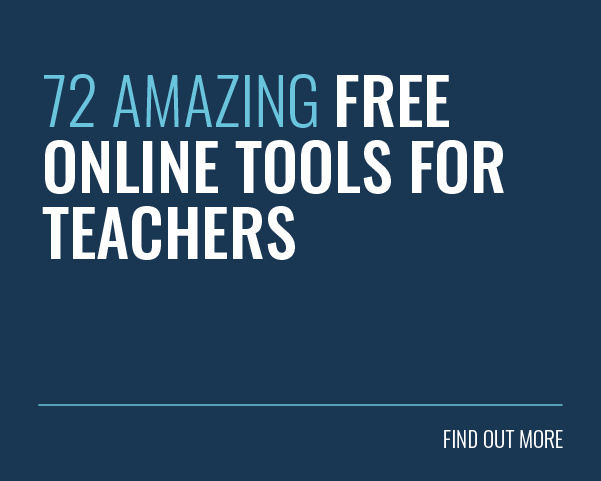 Have you ever been in the middle of teaching the bright minds in your class and caught them staring into space? Just when you think you have crafted the perfect online class, it becomes clear that your learners are an unfocused and unmotivated bunch. This begs the question: are your online classes fun enough?
Have you ever been in the middle of teaching the bright minds in your class and caught them staring into space? Just when you think you have crafted the perfect online class, it becomes clear that your learners are an unfocused and unmotivated bunch. This begs the question: are your online classes fun enough?
It’s often held that it’s harder to maintain your student’s attention through online interactions than it is through the classroom. But we believe this is a fallacy!
If you have a rock-solid engagement plan, you’ll win your learners’ hearts and minds. Indeed, if you’re willing to fully embrace this new medium, you’ll be amazed by the flexibility and interactivity it affords you.
Even better, there’s a good chance that you’ll be impressed by the results as well.
With this in mind, we put together 22 of our favourite tips for making your online classes fun!
Your Goal: Unprecedented Engagement
High-value online teaching requires an engagement strategy. After all, if your students aren’t paying attention during your lessons, they won’t be in a position to learn anything.
An engaged audience is also an active audience. This results in a vibrant classroom environment that encourages the types of behaviours and results that you would like to see.
With a fun-focused online teaching game plan, all this is possible. After all, engagement soon turns into motivation, and motivation soon turns into a habit.
With this in mind, let’s explore our top tips for how to make online classes fun and engaging (and how to make online teaching fun as well!).

Post-Pandemic Digital Learning Fatigue
Covid-19 caused a surge in remote working and digital learning. Now, remote and hybrid learning environments are commonplace in both corporate training and education.
While online learning and digital communication come with vast benefits, they have also given rise to digital fatigue. This refers to a situation where we are too overstimulated because of fully digital experiences.
It’s essential to keep this in mind when designing your online courses. Luckily, it’s still possible to host fun online classes if you follow our top tips and best practice! After all, digital fatigue does not lie in the medium but in a failure to engage your learners effectively.
22 Tips for Making Your Online Classes Fun
Here at Growth Engineering, we are online learning experts with a passion for making learning more fun. As such, let’s explore our top tips for transforming your online classroom into a true engagement engine.
Whilst we’ve designed these tips for teachers, many of them are applicable to instructors, trainers and educationalists of all stripes. Let’s dive in!
1. Pick the Right Tool (and Test It)

Before you can host your first online class, you’ll need to find a video conferencing tool that enables you to connect with your students. Luckily, you have a variety of options available to you.
Market leaders include Zoom, Webex, Adobe Connect, Google Hangouts, and others. Many of these tools have a free option, although you may require a paid subscription to properly meet the needs of your students.
Regardless of the tool you select, you should take the time to learn how to use it properly. Read the instructions, view the tutorial videos, and test out the functionality for yourself.
Your goal should be to know the tool well enough to support your students if they have any questions or difficulties.
2. Send Invites and Clear Instructions
Once you’ve set up the classroom event, you’ll need to get invites out to your students. This is typically done within your video conferencing tool. Your invite should include a rough agenda, joining instructions, and a list of anything your students will need to bring with them.
You should also let your learners know if they’re expected to be on their webcams or to utilise their microphones during the classroom session. This will give them an opportunity to prepare accordingly.
Finally, you should send a reminder approximately 15-minutes before the classroom session is scheduled to begin. This will jog their memory and ensure that joining instructions are readily available to them.
3. Stay Secure
In recent years, we have seen a big jump in online learning, virtual meetings and digital events thanks to Covid-19. While pandemic-related restrictions are gone, the popularity of online learning has remained high.
Unfortunately, this increased online activity has also caused a similar spike in cybersecurity issues. As a result, corporations and individuals alike have placed greater emphasis on the security of their video conferencing tools.
Luckily, there are actions you can take to secure your online classroom and ensure it is a safe space for you and your students. We recommend following these steps to keep your online study sessions safe:
- Don’t share meeting invites in public forums.
- Password-protect your meetings.
- Use a ‘Waiting Room’ to control who joins the meeting.
- Make sure you know all participants in the room.
- Ensure you know how to manage (and remove) participants.
4. Present Your Best Self
A disembodied voice is not half as engaging as seeing you in action. So turn on your camera and engage directly with your audience.
To maintain their attention, you should ensure you are talking directly into your camera. This will help you to stimulate a more personal connection with your students.
But the considerations don’t stop there. Don’t sit too close to the camera. Don’t sit too far away. Find the comfort zone and stick in it. And, of course, check the lighting in your room and ensure the acoustics are good.
It shouldn’t look like you’re broadcasting from a dingy basement or a messy room. If you can remove distractions like these, you’ll help your students to apply their focus in the right way.
5. Set Ground Rules
Successful and fun online classes require a teaching strategy. This means you need a clear structure, and structure requires rules.
Having clear ground rules sets expectations for your students and encourages them to take your classroom event seriously. This also helps you to limit unnecessary interruptions and distractions while ensuring a safe and equal learning environment.
You should discuss online etiquette with your students and make your expectations clear. How should they ask questions? Should they be on ‘mute’ whilst they are listening? Are they allowed to use the ‘Chat’ functionality? If so, what limitations will you place upon it?
We recommend writing up a list of ground rules and running through them at the start of every classroom session.
6. Follow Microlearning Principles

No matter how good a teacher you are, you can only maintain a student’s attention span for a certain amount of time. Child development experts note that attention spans vary depending on the age of your audience.
For instance, 6-year-olds can pay attention to a subject for 12 to 18 minutes, while 12-year-olds can pay attention for 24 to 36 minutes. Consider your audience and bear this in mind when creating your lesson plan.
To help your students to stay focused, we recommend following microlearning principles. This requires chunking up your content into small focused bursts that can be consumed quickly.
Think about how you can break large topics down into smaller constituent parts. Then think about how you plan to communicate each element to your students.
Similarly, try to vary the medium wherever possible to maintain engagement. Fun online classes require variety. For instance, you might start by introducing the concept, then play a video, then solicit questions before conducting a breakout group session and finishing with a quiz.
7. Record Your Lessons
Next up is a simple and practical piece of advice! Make sure to record your online classroom sessions.
These recordings are useful for several reasons. For example, there will be occasions when one or more of your students are unable to attend. Whilst this is not ideal, they will at least be able to catch up with the session in their own time by viewing the recording.
What’s more, these recordings may prove to be useful resources. When they need to study, your students may dip back into your lessons to recap certain topics. You could also watch the recordings to help critique your technique or approach.
Doing this may also help to uncover things you’ve missed. Perhaps there were students who didn’t get their questions answered. Now you can take the opportunity to respond outside of the class.
8. Check-In Periodically
You should check in with your students on a regular basis, just as you would in a physical classroom.
It’s important to ensure students don’t get left behind in the online learning world. Asking questions may feel intimidating, and this can cause some of your students to sit on the sidelines.
Ensuring your audience understands what’s been covered so far helps you to prevent this. As such, make sure to ask some challenging questions and solicit further inquiries from your learners.
Equally, it’s essential to establish what your students should do if they feel they don’t fully understand any part of your lesson. Many video conferencing tools offer some type of polling functionality you can use to determine their understanding of the topic or instructions provided.
9. Monitor the Chat
Many video conferencing tools also offer a social media-esque ‘Chat’ area. This is where your students can communicate with you and with each other during the lesson.
You should first decide whether this functionality will be used within your online classes. Following that, you should set some clear guidelines on how it should be used. After all, you need to make it clear that disrespectful language or comments will not be tolerated.
With these rules in mind, make sure to check the ‘Chat’ area on a regular basis. It can be a great way to monitor the temperature of the room, request questions from your audience and check their knowledge.
10. Provide Interactive Activities

We learn best when we’re active participants in the learning experience. As such, you should seek to banish passivity by incorporating fun interactive activities into your online classes.
These include, for example, icebreaker activities, puzzles, presentations, pitches, peer reviews, quizzes, brainstorm sessions, and even virtual field trips.
Reviewing different activities and making a note of the ones that really resonate with your audience helps you to tailor your future lessons. It’s especially important to look for ways to involve your less outgoing students.
You will be able to conduct many of these activities directly through your video conferencing tool, regardless of internet connection. For instance, you could task a student with solving a puzzle via the ‘Whiteboard’ functionality most conferencing tools offer.
11. Utilise Breakout Groups
As a classroom-based teacher or instructor, there’s a good chance that you’ve previously split up a bigger class into smaller, task-oriented groups. This works well because it inspires peer-to-peer participation, encourages mentoring, and drives creativity.
There’s no reason why this approach should be dropped from the online classroom experience. Indeed, most video conferencing tools offer ‘breakout room’ functionality. Zoom, for instance, enables up to fifty separate sessions per meeting.
As the host, you will be able to switch between sessions as you wish to check on progress. Once your students have had a chance to discuss a topic within their groups, they can return to the main classroom session and present their findings.
Whilst it can take some configuration, this is a powerful weapon to have within your online teaching arsenal.
12. Explore Other Free Tools
Most online lessons are delivered through video conferencing tools. These solutions are excellent for facilitating online classes, but supercharging engagement levels and making those classes fun may require additional support.
Luckily, there are a variety of tools out there that can aid you in your quest for perfection. These solutions are great for bringing your online classes to life but also work in traditional in-person settings.
For instance, Animoto empowers your students to create 30-second video clips of what they’ve learned. Alternatively, you can utilise a word cloud tool, a quizzing solution or learning games to capture your student’s attention.
13. Go Mobile
Traditionally, teaching folk see mobiles as the big distraction monsters that lure their students’ focus away. But this does not have to be the case!
Mobile learning has taken the corporate L&D world by storm, but it has potential in all areas of education. After all, being able to access classes or training content on mobile devices makes learning more accessible and fun.
There are various ways to put those mobile devices to good use during your classes. For instance, by embracing mobiles, you can take advantage of discussion forums, text messaging assignments, QR codes and fun learning apps.
You can even use Twitter as a part of your lessons! The possibilities truly are endless with today’s vast array of free or low-cost educational mobile apps and features.
14. Gamify Your Classes

It doesn’t matter whether your students are 10, 15 or 35 years old, gamification can be a powerful engagement aid! In fact, there’s a wealth of research that attests to its efficacy. Games make learning and online classes so much more fun and memorable.
This is especially true if you have taken the time to craft your gamification strategy with your learners’ unique characteristics in mind. As such, we recommend implementing game mechanics into your online classroom.
And the best part? Game mechanics do not necessarily require a lot of resources, prep time or expense. There are thousands of free educational games and tools online that enable you to implement games with little effort.
For instance, you could use a free online badge-making tool to provide virtual Badges to students who ask good questions. Or you could keep a virtual Leaderboard based on quiz results. Just make sure this is regularly refreshed to prevent disengagement or demotivation.
15. Set Achievable Goals
Working towards goals that seem overly ambitious can feel daunting. This, in turn, is guaranteed to lower engagement and make your online classes and learning processes less fun altogether.
As such, you should set smaller short-term goals for each lesson that feed into your learner’s ultimate end goal. These achievable goals act as progress checkpoints for your learners and help them to work towards their overarching objectives.
In addition, make sure to celebrate your learner’s achievements every time they hit a key milestone. Not only will this encourage fun and supportive learning environments, but it helps your learners track their progress.
Even better, you should log all these proud moments in one place. That way your students can look back on themselves and see how far they have come.
16. Use Real-Life Scenarios to Make Classes Relevant
Creating a real-world connection to what your students are learning is an excellent way to make your training more engaging. After all, it will give them a better understanding of why they need to learn what you are teaching.
Giving concrete examples of how the topic is relevant to them helps your learners make a connection to how they’ll use this information in the future.
Similarly, being able to answer those ‘why do we have to learn about X’ questions effectively will improve your credibility as a teacher. Your learners will stay tuned in your lessons without encouragement, as they know the topics you teach are always relevant.
You can take your training relevancy up a notch by utilising scenario-based teaching. While often used in corporate training, scenarios are also great for teaching kids of all ages!
After all, scenarios make training relevant while placing your learners at the heart of the decision-making process. Depending on their age, you can adjust the complexity and length of these exercises.
17. Flip Your Classroom
Studies show that flipped classroom teaching methods promote student engagement. This approach has gained popularity slowly ever since the term entered the L&D world in 2012.
In flipped classrooms, your students learn new information at home. Following this, in-class time is used for critical thinking activities and reinforcement based on the knowledge they’ve already picked up.
As classroom time is spent on discussions and developing in-depth understanding, flipping your classroom typically leads to increased activity. After all, your students are able to work at their own pace and engage with their peers in a more interactive and meaningful way.
18. Create Group Time

Working together helps your students retain information quicker and longer. Similarly, cooperation is the key to developing critical thinking and communication skills. And that’s why you should include group time in your classes.
Group learning breaks up the usual routine of traditional instructor-led learning, which makes the lesson more enjoyable. After all, we rarely get bored when our environment is dynamic and evolves.
Let’s have a look at how you can keep group time productive:
- Assign roles: By giving each student a role within their group, your students will know what to expect when group work begins. This will help you to keep focus on the task at hand.
- Structure the group time: Structured collaboration is the best way to ensure effective group time. This is especially true for classes with younger students.
- Keep it short: The longer the sessions last, the easier it will be for your students to lose focus. Keeping group time short is an excellent way to spice up your lessons while ensuring optimal levels of fun and productivity.
- Create sentence starters: Jumping into a conversation can feel intimidating or awkward. Providing sentence starters gives your students a great starting point to get the discussion going.
19. Tailor the Learning Experience
Your class will quickly become boring if your training content is either too basic or too advanced for your learners. Either they will lose interest as they already know the topic you are covering, or they will struggle to keep up.
You can mitigate engagement issues by tailoring the learning experiences to your learners’ unique needs and skill levels. This helps you to adjust the complexity of your teaching, coursework and assignments.
When moving onto a new topic, you need to grasp your learners’ current understanding of what your lesson covers. You can do so by getting your students to complete an introductory test before the class.
Then, you can introduce higher-difficulty coursework for more advanced learners. Similarly, you can offer extra resources and different content formats to learners who are not familiar with the topic yet.
While this is doable in offline classes too, it’s arguably easier to provide tailored learning experiences through online learning platforms, like a learning management system. You can, for instance, create customised learning pathways and push and pull the right difficulty-level content to the right learner in just a few clicks.
20. Unleash Your Student’s Creative Flair
Students want to express themselves and demonstrate their skills, not only to their teacher but to their peers. And they want to do so in a variety of ways!
Luckily, academic work doesn’t have to be boring or rigid, regardless of whether your students complete online or in-class assignments or exercises. In fact, it can be relevant, engaging and fun.
For instance, your learners can create anything from portfolios, audio recordings, posters, blog posts and graphics to scrapbooks, word splashes, drawings, poems and live streams.
Not only will this make your learners more engaged, but by sharing their knowledge, your learners can help their peers. After all, we all have something to contribute.
This is why creativity is the highest level of the revised Bloom’s Taxonomy. When they reach the ‘create’ stage, your learners have all the cognitive skills they need to apply their new knowledge to different situations.
21. Explore Immersive Technology

Immersive technology, including AR and VR, has been making moves in the L&D space for years. This only makes sense as the world is getting more technologically driven year by year.
Immersive technology can help you to skyrocket the fun and engagement levels in your online classes. After all, it allows your students to take an active role in the learning process instead of being passive spectators.
In addition, immersive technology is still a relatively new experience to most, especially for your younger students. This novelty makes the experience more exciting, memorable and effective!
Luckily, there are some free and low-cost tools that you can implement in your classroom. For instance, Anatomy 4D is a free AR app that brings the human body to life. Similarly, Arloon provides fun AR apps for anatomy, chemistry, geometry, biology and maths at low cost.
22. Seek Feedback From Your Students
Last, but certainly not least, don’t forget to solicit feedback from your students on a regular basis. This will help you to ensure you are meeting the needs of your audience and improving your overall approach.
Feedback is important whether you host your classes online or in-person, but it becomes invaluable in an online setting. After all, it’s much easier to read nonverbal cues and expressions face-to-face.
As such, seeking feedback enables you to address any concerns, make subtle changes and build your confidence as a teacher. Similarly, it will help you to get to know your learners’ preferences better. And let’s be realistic, you’ll need all the help you can get to make your classes as fun as possible.
How you gather this feedback is up to you. For instance, you can do it at the end of the classroom session, request that it is put in an email, or send out an anonymous survey.
Just make sure that you give due consideration to all comments and demonstrate an open mind when it comes to making changes going forward.
Final Words
Embracing the digital revolution and making the leap into online classroom sessions can be nerve-wracking. And making online classes fun and interesting is even harder. There’s an awful lot to learn and many obstacles to overcome this school year.
But whilst online classrooms are limited in some ways, they also open a virtual doorway to new learning experiences. Learning experiences that are more accessible, more interactive and — dare we say it — more engaging than ever before.
Our 22 tips should be well placed to capture your audience’s imagination, drive motivation and encourage participation. As ever, the secret sauce is engagement. All it takes is a digital mindset, the right tools, and a focused approach.
Growth Engineering Authoring Tool can help you with that! Thanks to our game-based content tool, you can create engaging online courses quicker than ever before and drive real knowledge retention.
Learner engagement is not easy. Download our ‘150 Nifty Learner Engagement Tips‘ today and see those engagement levels skyrocket!









